Last Updated on April 11, 2022 by Heather Hart, ACSM EP, CSCS
Running on trails through forests, over mountains, or across deserts can be wildly exhilarating…or incredibly intimidating. For those who don’t spend a lot of time in the more primitive parts of nature, the idea of being immersed deep in the wilderness while trail running can be scary.
And for those coming from a strictly road running back ground, even a well traveled trail in the middle of a urban park can spur some trepidation.
But one of the best ways to take the intimidation out of trail running, is to make sure you are taking all of the appropriate measures to keep yourself safe. And even if you aren’t afraid of what my be lurking behind the shadows of the pine trees, the simple fact that running on trails can be more desolate and remote than a run through a busy neighborhood, means that safety should be a priority to you.
In this post, we’ll cover 8 basic trail running safety tips that every runner should know and practice, every single time they hit the trails.
8 Important Trail Running Safety Tips:
Let’s be honest, almost everything fun and exciting in life is somewhat inherently risky. Trail running is no different. There are indeed a number of things that could go wrong when running on trails, from simply tripping over a root, to getting caught above the tree line in a storm. But, by following these trail running safety tips, you’ll help minimize the risks of danger:
1. Know Your Trails (or Carry a Map!)
I love adventure as much as the next person, but getting lost can become a life threatening situation pretty fast. Now, depending on where you live and run, your trails may involve a very short out and back or loop in the woods situated in the middle of a sprawling urban city. Chances are if you get turned around on those trails, you’ll find your way to civilization pretty darn fast.
For others, a trail system can be dozens to hundreds of miles long. The trails may border thousands of acres of undeveloped back country, forest, or desert land. Taking a wrong turn or getting lost in these scenarios could become a serious mistake.
Regardless of how remote your trail system is, it pays to become familiar with the trails you are running. Research your routes before hand. If you’re not experienced with the particular trails you are running on, be sure carry a map (and know how to read it.)
Carry a cell phone or other GPS enabled device, however, do not rely solely on that device, for technology and GPS reception can fail.
2. Tell Someone Where You are Going (and When You Plan to Return)
I’m nearly 40 years old, I have two teenagers of my own, I’m not afraid to sound like your mother here when I say “LEAVE A NOTE BEFORE YOU GO!”
Seriously, be sure to tell someone where you are going before you head out, and yes, even if it’s simply a note left at home. In addition to location, give an estimated return time so someone knows when to expect you back. If an emergency arises and you don’t come back, this gives rescuers an idea of where to begin looking for you.
If you’re heading deep into the back country for longer runs, consider a product like the Garmin InReach, a GPS satellite tracker where your loved ones can keep track of you, and you can call for help, even in the most remote areas.
Should You Run Alone?
On a related trail running safety note: I won’t tell you to NOT trail run alone. Many others will, but you won’t hear it from me. Sometimes the solidarity of a solo trail run can be an amazing experience, or even a form of much needed running therapy. So I get the need to sometimes hit the trail solo.
However, if possible, running with a friend or a group is your best bet. Safety in numbers!
3. Check the Weather Before You Go
Before you head out for your run, check your local weather forecast, especially if you will be in a remote area, at higher elevation, or in open terrain.
In most cases, being caught in a storm is just annoying. But in some cases, it can become a dangerous situation…especially if you are on a secluded trail where you can’t readily seek shelter. A whiteout blizzard above a mountain tree-line, a thunderstorm in an open prairie field, a flash flood in the desert…these things can happen quickly and can be deadly. On a less extreme scale, even a heavy rainstorm can quickly cause the air temperature to plummet, leaving you shivering for the last three miles of your run, trying to get back to your car.
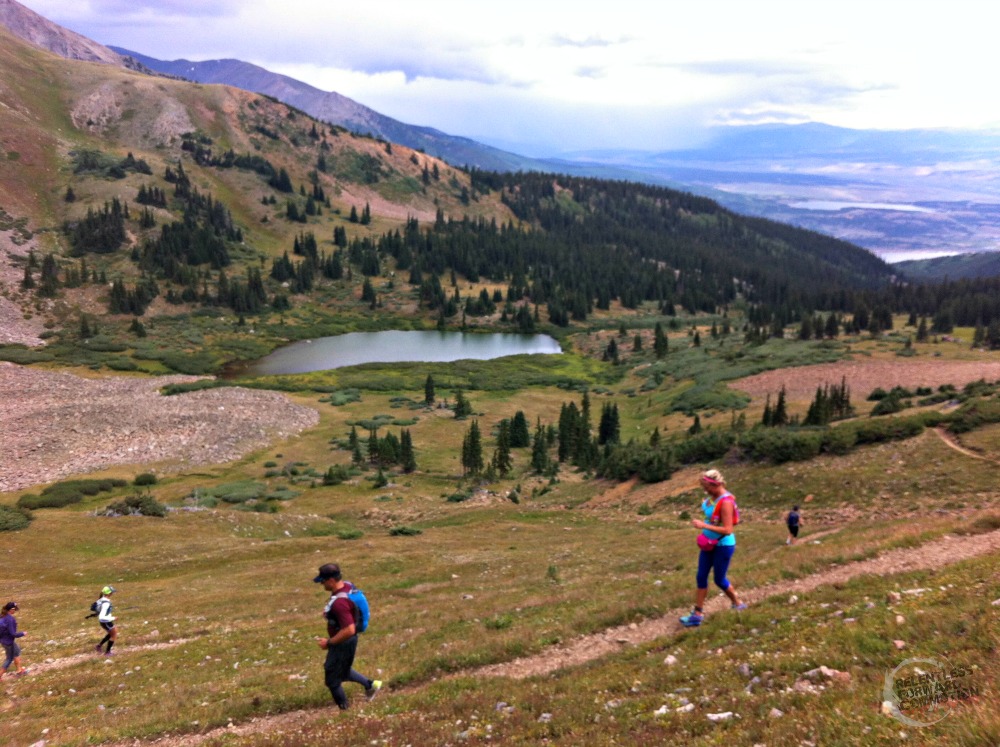
This isn’t to say that you shouldn’t run in inclement weather, I love a good summertime rain storm run as much as the next person. But rather, it’s a reminder to be aware of what you might possibly face, and prepare accordingly.
Don’t Forget to Double Check Sunrise & Sunset Times
When you’re checking the weather, don’t forget to double check when the sun rises and sets. It can get dark quickly, especially on trails deep in wooded forest. If you plan to be out after dark, don’t forget your headlamps!
4. Wear Appropriate & Protective Gear
Yes, you CAN wear any type of running gear on the trails…but in many cases, trail specific gear is going to lend to a more positive experience. Here’s a couple of trail specific gear suggestions to keep in mind:
- Trail Running Shoes: Trail specific running shoes are designed to give you better grip on the uneven trails, to help prevent slipping on wet mud or loose rocks. Further, they are often made of more rugged materials to help protect you from rocks, sticks, or other items you may encounter on the trail.
- Gaiters: Wearing tall socks or gaiters will help keep debris from entering your socks. They can also help protect you from branches, poisonous plants, and even insect bites (like ticks), especially if the trail is a bit overgrown or not very well maintained.
- Layers: Often, the shade of the trees and change in elevation may result in drastic temperature variations, so be sure to wear or pack layers that are easy to remove or put on.
- Be Bright! Lastly, wear bright colors so you are highly visible to other runners, cyclists, or even hunters.
5. Carry Plenty of Fluids & Nutrition
Unlike running through urban areas with neighborhoods and convenience stores, it is very unlikely that you will find a reliable water or nutrition source on the trail. While fresh water sources may be available, the water quality might be questionable: bacteria or parasites like giardia can cause miserable gastrointestinal issues.
So, be sure to carry more water and nutrition than you feel you may actually need, in the event that you become lost or spend more time on the trail than you expected.
Unsure of how to carry everything? A running hydration vest or pack is a great piece of gear for trail runners. Not only can you carry plenty of water or nutrition, but it’s an easy way to carry any other safety essentials you may need, like warm layers, a cell phone, or even a map.
6. Watch Your Step!
One of the number one hesitations I hear from road runners, when I ask why they don’t ever run on trails, is that they are afraid to trip, fall, and hurt themselves.
Trails do vary greatly in types of terrain, from wide, flat, dirt trails, to single track lined with rocks and roots. Depending on the type of trail, you may encounter very few or very many natural obstacles along the way. So yes, tripping, falling, and potentially hurting yourself IS a very real possibility; the aforementioned athlete’s trail running fears are not unfounded.

But, there are ways to limit your risks:
- Choose an appropriate trail for your fitness level and current trail running experience.
- Take shorter, faster steps while you run will allow you to have better control, and maintain better balance, while covering the uneven terrain.
- Don’t forget to pick up your feet! Shuffling along the trail is the easiest way to catch your toe on a rock or under a root, and potentially end up falling.
Related post: 6 Common Trail Running Fears – and How To Get Past Them
8. Bugs, Plants, Bites, & Stings
When you run on the trails, you are on mother nature’s turf. And some of the other residents that call nature home? They can bite, sting, or leave you with a gnarly rash.
- If applicable to your area*, be sure to wear bug spray. (*As a Native East Coaster, I do not know if a place on this earth exists without mosquitoes, horseflies, and those tiny gnats that like to fly into your ears and eyes, but I imagine it might exist somewhere. )
- Be aware that some trails are home to venomous snakes. While bites are rare, be sure to keep your eyes open, and know what to do in the case of a snake bite.
- Remember that most pretty flowers, leaves, and plants are harmless…but others, like poison ivy, oak, or sumac, may leave you wishing you kept your hands to yourself. Learn what those plants look like…and then keep your hands to yourself!
Related Post: Everything You Need to Know About Trail Running and Poison Ivy
7. Be Aware of Your Surroundings
As mentioned numerous times already, trail running is often far more secluded than running through a neighborhood or an urban park. Leave your headphones at home, so you are able to hear the sound of approaching runners, cyclists, or even animals. Which leads us to the last point…
A Word on Carrying Personal Protection:
This is a highly debatable topic for some, but we’re going to cover it none the less. You should consider whether or not you want to run with some sort of personal protection item. While some people do go to the extreme and run with firearms, a more common practice is running with a handheld pepper spray. The latter certainly won’t protect you from a grizzly bear or mountain lion attack (both highly unlikely, but certainly a risk in some parts of the country). But pepper spray may fend off advances from aggressive dogs or even worse, attacks from fellow humans.
Related post: How to Avoid Wild Animal Attacks While Trail Running
Again, this is a highly personal decision. You should consider the areas you are running through (are there lose dogs? Unsavory people frequenting trails?) as a deciding factor as to whether or not you want to carry some sort of protection.
Lastly, if you do decide to run with a form of personal protection, make sure you are well versed and comfortable in its use.
Now…Go Hit The Trails!
From a change of scenery to a change of physical terrain, there are many benefits to taking your running miles off of the pavement and onto the wooded trails. However, the often secluded trails certainly do bring on a special set of safety circumstances that must be taken into consideration. Following the above trail running safety tips will help ensure your ability to hit the trails for many miles to come.
Heather Hart is an ACSM certified Exercise Physiologist, NSCA Certified Strength and Conditioning Specialist (CSCS), UESCA certified Ultrarunning Coach, RRCA certified Running Coach, co-founder of Hart Strength and Endurance Coaching, and creator of this site, Relentless Forward Commotion. She is a mom of two teen boys, and has been running and racing distances of 5K to 100+ miles for over a decade. Heather has been writing and encouraging others to find a love for fitness and movement since 2009.

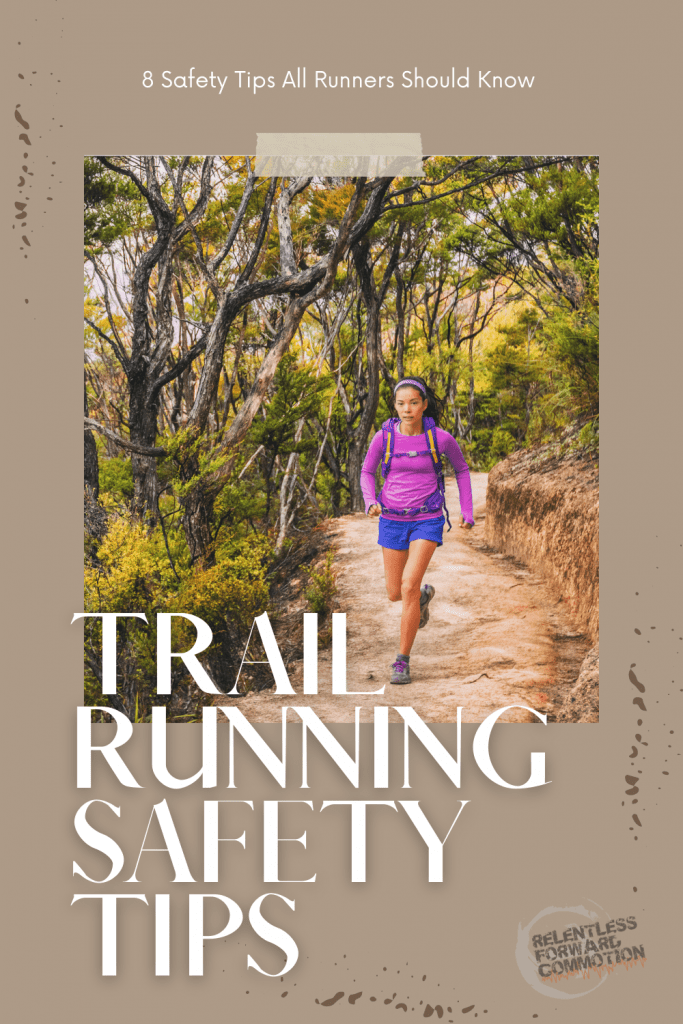
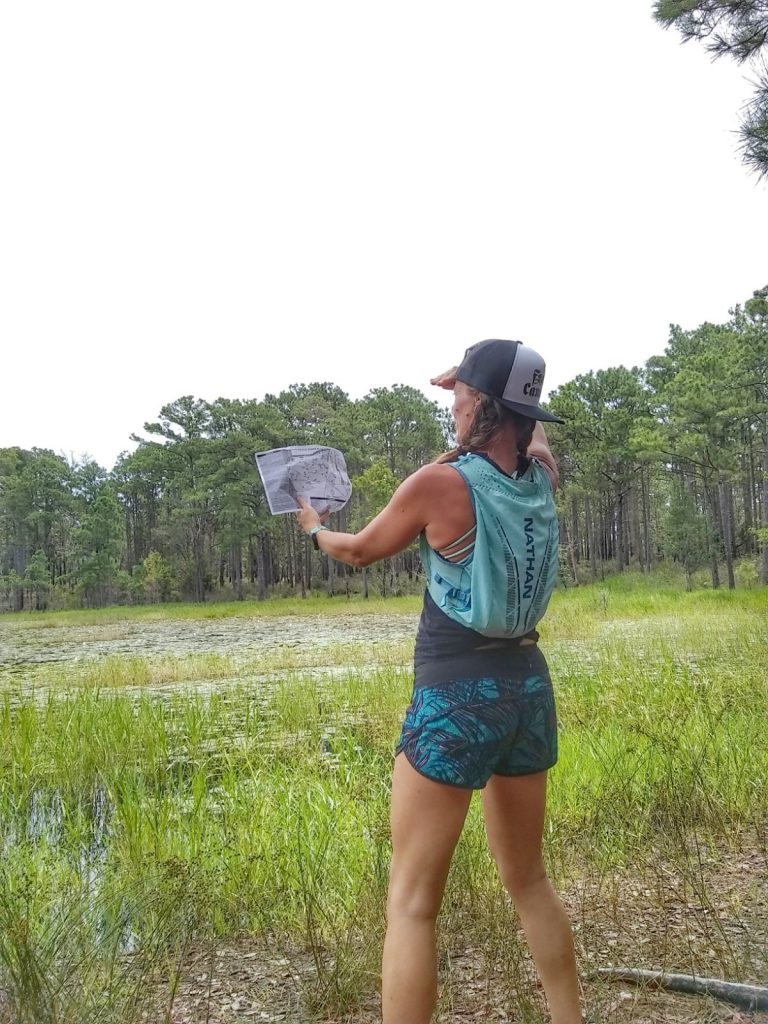
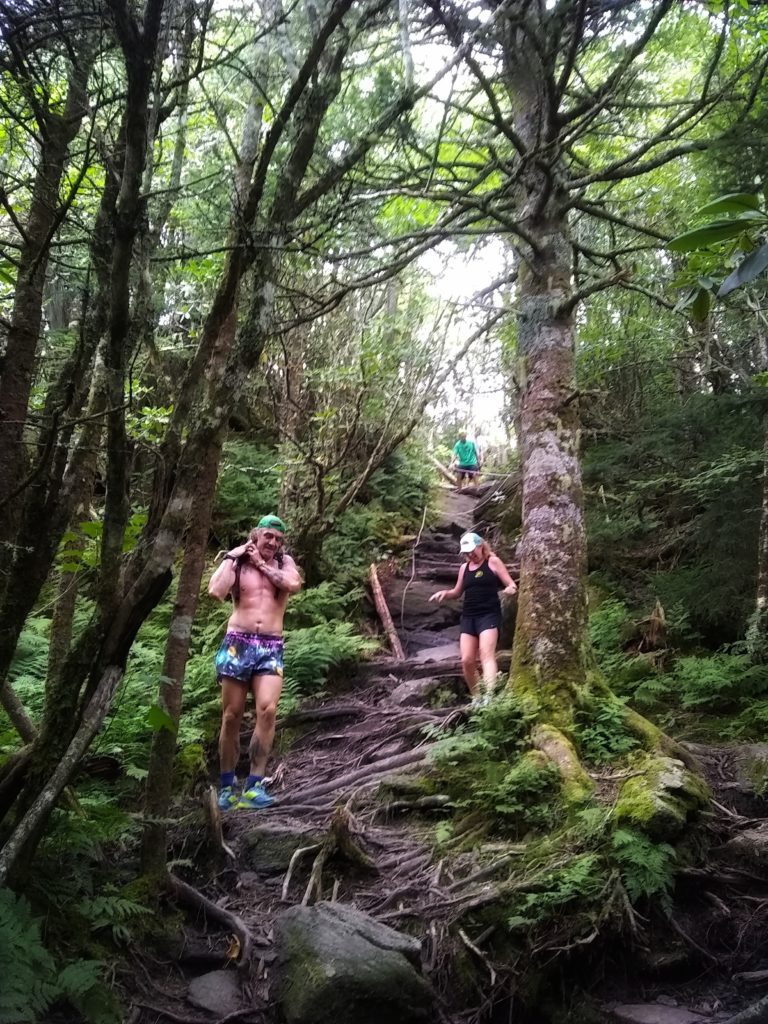
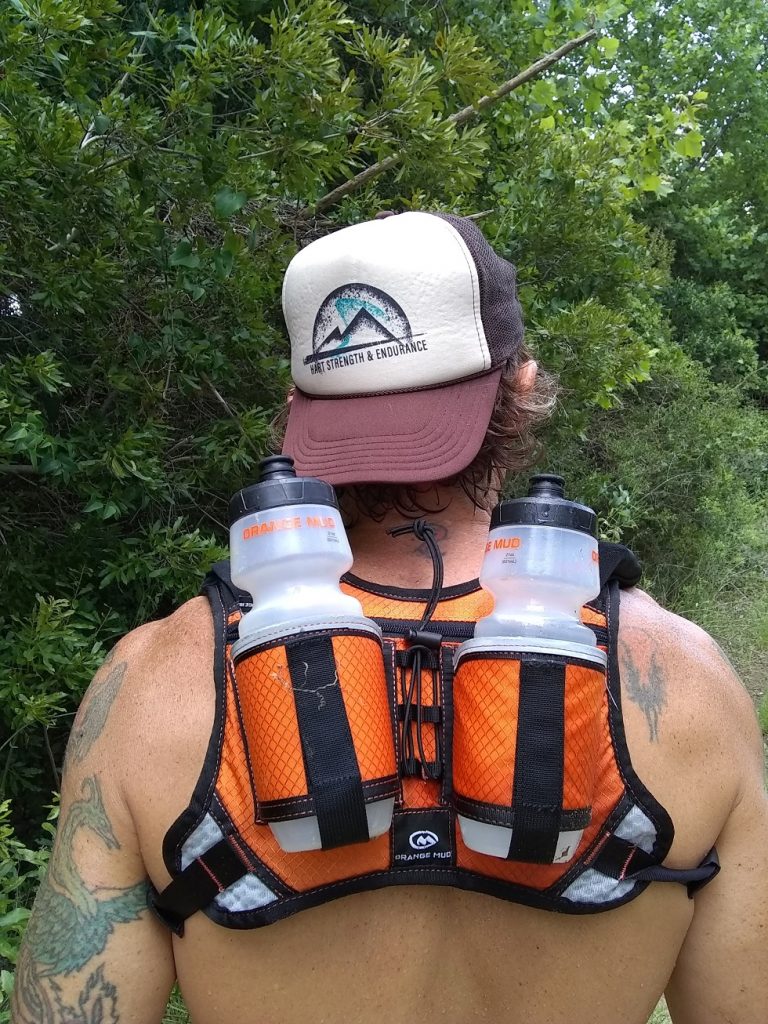

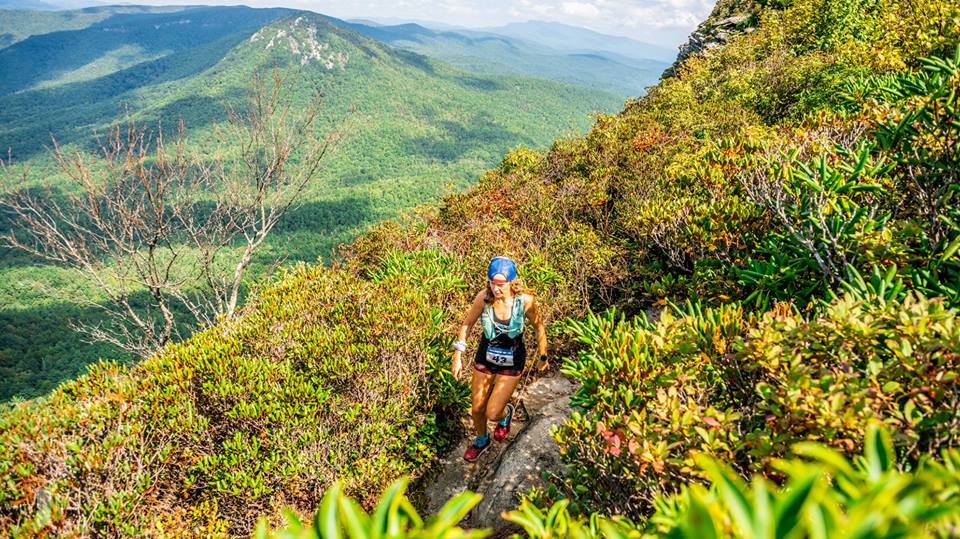
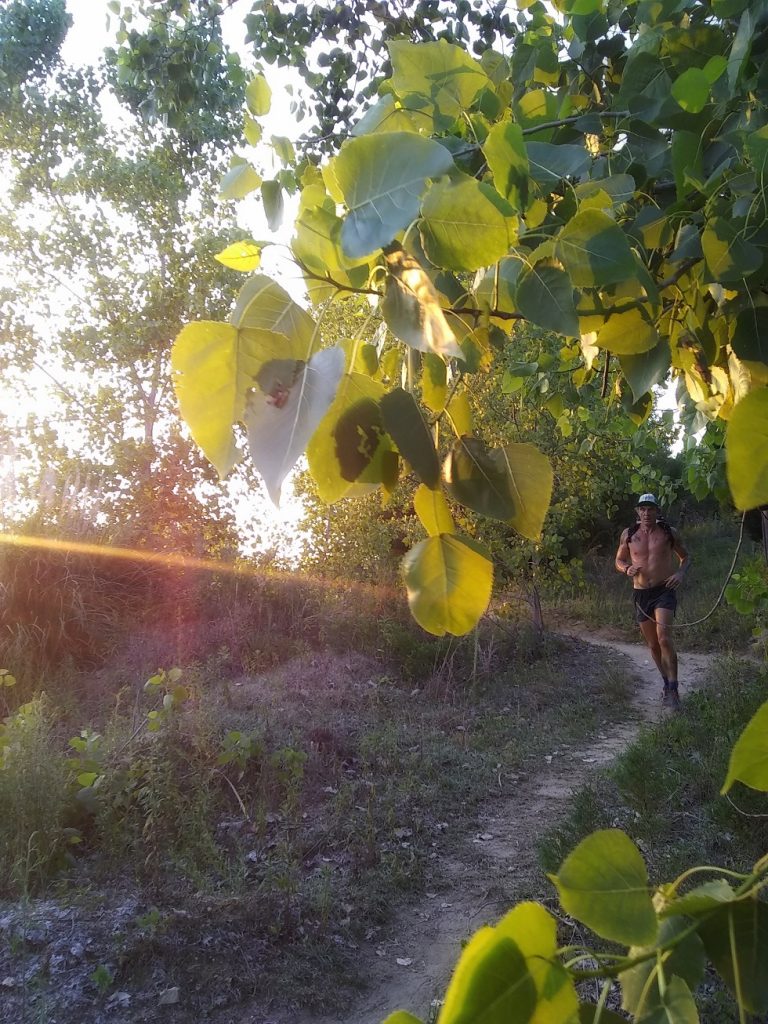
Strength and Sunshine
Great tips! You definitely need to be FULLY aware and let someone know where you going! But really, I’d just feel better always doing the trails WITH a buddy!
Nicole @ Fitful Focus
As a city dweller, I don’t get in nearly as much trail running as I like. I find it so peaceful! I’ll definitely be following these tips the next time I’m somewhere with more trails. Also, if you think that squirrel is fat, I saw this one last summer in California: https://instagram.com/p/pjmWnAyFup/?modal=true
Heather
Oh. My. Squirrel. That thing is HUGE!
Eat Pray Run, DC
these are all smart and very sound tips. i didn’t think about the sock thing but that makes total sense. i love trail running!
alisamarie
These are fabulous tips! Trail running always feels so much better, but definitely has more hazards!
petite heartbeat
These are some great tips! Colorado has tons of trails I’m planning to explore your tips are essential Thanks!
Heather
Awesome! I look forward to exploring Colorado myself one day! I hear it’s beautiful!
Colorado Gal
I’m with you on the trail zealot! I actually tried to do a quick run yesterday with Tals (first one since the ultra) but it was so muddy from the melting snow that I had to stick to the roads…and hated it. I made it 2 miles and quit!
Heather
We still have so much snow on our trails, I’m sure they are going to be a sloppy mess pretty soon here!
Patty @ Reach Your Peak
I really want to do more trail running this year. I am kinda traumatized from last summer when I tripped on a rock and totally face planted though :-O
Heather
EVERYONE falls, trust me Patty! You just have to brush yourself off and try again! I promise it gets easier and you fall less as you grow accustomed to running on trails!
Kathryn @ Dancing to Running
Its so important to tell somebody where you plan to run, whether its on a trail, on a sidewalk, or on the open road.
Heather
Absolutely agreed!
Taylor @ Food Faith Fitness
Love this post! I never run trails for the sole reason that I always think it’s so dangerous and scary! I totally needed to read these tips…and now get my feet on those trails!
Heather
It can be scary. I’m lucky the area I live in is pretty tame, however the next town over? I won’t trail run alone 🙁
NutriFitMama
OMG that squirrel! I have a pic from when we were in Monterey area in CA and there was this HUGE squirrel LOL- it was crazy! I always carry protection with my on runs, regular runs or trail runs. I had a horrible experience with dogs once and also have been followed by creepers a couple times. I think you can’t be too careful!
Heather
I’m still reeling over the squirrel pic Nicole posted!
Femme Fitale Fit Club
I’ve gone trail running and I didn’t enjoy it. It hurt my feet, hurt my ankles and the terrain was way too uneven for it to be enjoyable to me. Now my friend Rod LOVES trail running but I was scared of falling over tree root and the like. I think I will stick to street running.
Heather
That is definitely half of the appeal (in my opinion), and one of the reasons I encourage all runners to hit the trail from time to time. The ever changing terrain will strengthen your ankles and balance over time. But I totally understand the frustration when you first get started.
Christine @ Love, Life, Surf
Oh I wish that I could get out on the trails more! These are such great tips.
Heather
Thank you Christine! Yes, I imagine there aren’t many in the city?
MCM Mama Runs (@mcmmama)
Great tips. The only trails really close to me are much like your picture above (seriously, can’t get lost), but I did run the North Face Trail half marathon and it was a totally different world. I could not imagine running that by myself…
Heather
I remember when my sister lived in Arlington (sort of near you, right?) , I ran the Mt. Vernon trails every time I visited her. Granted, those are paved “trails” but still, such a great system! A North Face race is TOTALLY on my must do list! I need to find one!
mkadens1
These are great tips! I ran lots of trails in 2012 when I trained for MCM and it was just so hot I needed the shade. There was one very memorable belly flop as my foot caught a root in the final 400m of a 20-miler. Thankfully I was very close to my car!
Heather
Oh man if I had a dollar for every time I’ve done a belly flop on a trail, haha!
Alyssa Rimmer (@simplyquinoa)
I’m totally passing this post on to all my friends who live in VT. I’m in NYC and we don’t have many trails, but I know my fam will love it! Great tips 🙂
Heather
Thank you for sharing! And yes, we have AMAZING trails up here in Vermont! Even though they are all covered in snow right now, haha!
Sue @ This Mama Runs For Cupcakes
Great list and great timing. I’m about to sign up for Ragnar Trail! Pinning for later!
jillconyers
Great tips. I would add don’t run alone.